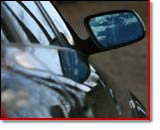Family members and friends must also be on the lookout for warning signs and help determine whether or not a senior is having difficulties on the road.
Go on a drive with your loved one and take note of the following:
Do they obey all the traffic rules?
Do they have difficulty seeing signs and judging distances to other vehicles?
Do they safely negotiate left-hand turns and confusing intersections?
Do they have the strength and agility to turn the wheel and apply the brakes in unexpected situations?
Do they brake for no reason, or too often?
Do they use turn signals and do they interact safely with other vehicles?
Look for other signs of driving difficulties,  including a sense of fatigue afterwards, as if the trip has been extremely taxing on a senior's nerves and concentration. Inattention tops the list of reasons of why seniors get into accidents.
including a sense of fatigue afterwards, as if the trip has been extremely taxing on a senior's nerves and concentration. Inattention tops the list of reasons of why seniors get into accidents.
One of the most common signs is unexplained dings and dents on a senior's car. Check your parent or loved one's vehicle for mysterious scratches and dents. Other evidence of impacts can include unexplained bodily injuries.
After you have evaluated a senior's driving and you are concerned that they may be a danger to themselves and others, it is critical that you approach them in a way that won't alienate them.

